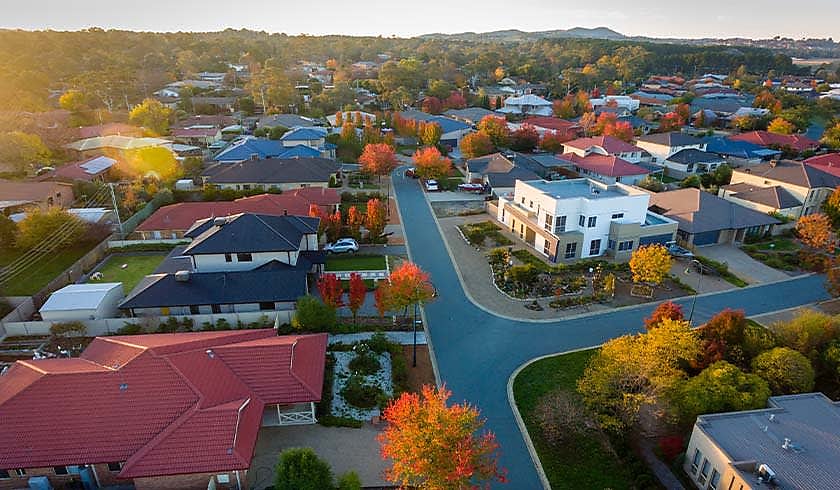Real estate bodies call for national energy rating scheme
The Property Council of Australia (PCA) and the Green Building Council of Australia are calling for the creation of a single energy performance rating scheme applicable to every residential home in the country.

This was one of the 39 proposals included in the joint report of the real estate bodies, which put forward a raft of property-focused policy recommendations that would help the country achieve its decarbonisation goals.
Property Council chief executive Mike Zorbas said a rating system similar to the existing ones that inform buyers about the energy efficiency of appliances should be established for homes as well.
“The energy rating on your fridge tells you if you are cooling your food and drinks efficiently, but there is no national rating scheme up and running to tell you about the efficiency of heating or cooling your whole home — your most important purchase of all,” he said.
He contended establishing a unified national rating scheme would be beneficial not only to home buyers but also to renters who desire a better understanding of the expected energy costs and comfort levels during colder months.
According to the report, while home owners and renters value energy performance, there is a “lack of a credible and widely accepted benchmark to easily assess the energy efficiency of homes”.
And while work has been underway for several years on the development of a rating tool for homes, the report highlighted that a working system has yet to be released for public usage.
Implementing a single, reliable rating scheme consistently across the nation, as suggested by the report, would not only simplify the comparison of homes’ efficiency but also foster a market for more energy-efficient homes, offering additional consumer protection for both buyers and tenants.
According to the report, the national rating scheme aims to disclose the energy performance of residential buildings and includes the following:
- Establishing benchmarks that enable market comparison of sustainability performance at its best.
- Revealing the degree of solar PV provision, energy storage, EV charging, and electrification of heating and hot water systems.
- Ensuring there is a single input tool for calculating the rating and a single, public-facing communication of results to avoid disparities and confusion.
- Implementing a governance model based on the National Australian Built Environment Rating System that brings the federal, state and territory governments and industry together to collectively manage benchmarks for new properties/homes.
Green Building Council of Australia’s chief executive, Davina Rooney, said the introduction of a dependable rating system would enable home buyers and renters to compare properties effortlessly, and guarantee Australia follows in the footsteps of other countries where similar policies have been successfully implemented.
“Locally, we’re living with the impacts of climate change and a cost-of-living crisis, while healthy, affordable, energy-efficient homes are increasingly out of reach for everyday Australians.
“Globally, we’re being called to ‘do everything, everywhere, all at once’ to reduce carbon emissions. Australia has the tools, the experts, and the guidance to meet this call and ready our buildings and homes for the future,” she said.
Mr Zorbas said this is just one of the opportunities to look at to help reach the national emissions reduction goals, highlighting achieving the target should not be solely focused on the energy sector.
“Buildings account for more than 50 per cent of Australia’s electricity use and 23 per cent of all emissions,” Mr Zorbas said.
With companies comprising the Australian property sector viewed as “global leaders in sustainability”, Mr Zorbas noted, “We are incredibly well positioned to deliver high-impact and yet cost-effective ways to help achieve the nation’s net zero goals”.
Another key recommendation from the report is the phase-out of fossil fuels in existing buildings and appliances, which would see the end of gas water heaters and cooktops in Australian homes.
Additionally, it emphasised the need to tackle embodied carbon emissions or the emissions associated with the entire construction process, promote demand-side action through energy market reforms, and mandate all-electric new residential and commercial buildings.
The report also advocates for a “just transition”, which includes initiatives and incentives to ensure all people, including vulnerable groups, benefit from a cleaner and more energy-efficient built environment.
“All we need is the right policy settings to guide that effort. Smart policies should be front and centre for decision-makers seeking to reduce Australia’s emissions,” he said.
Ms Rooney said the report also has a strong skills focus, noting that “the shift to low-carbon, resilient buildings cannot be achieved without improving the skills and capacity of the workforce”.
“Transitioning 85 per cent of homes off gas by 2040 requires retrofitting hot water systems in 5,000 homes every week until 2040, starting now. Much of Australia’s building sector is not equipped or trained for this task, but it doesn’t have to be that way.
“We have a unique opportunity to boost the capacity and know-how of our already skilled workforce, making the transition to low-carbon, resilient buildings within reach and possible sooner rather than later,” she said.
